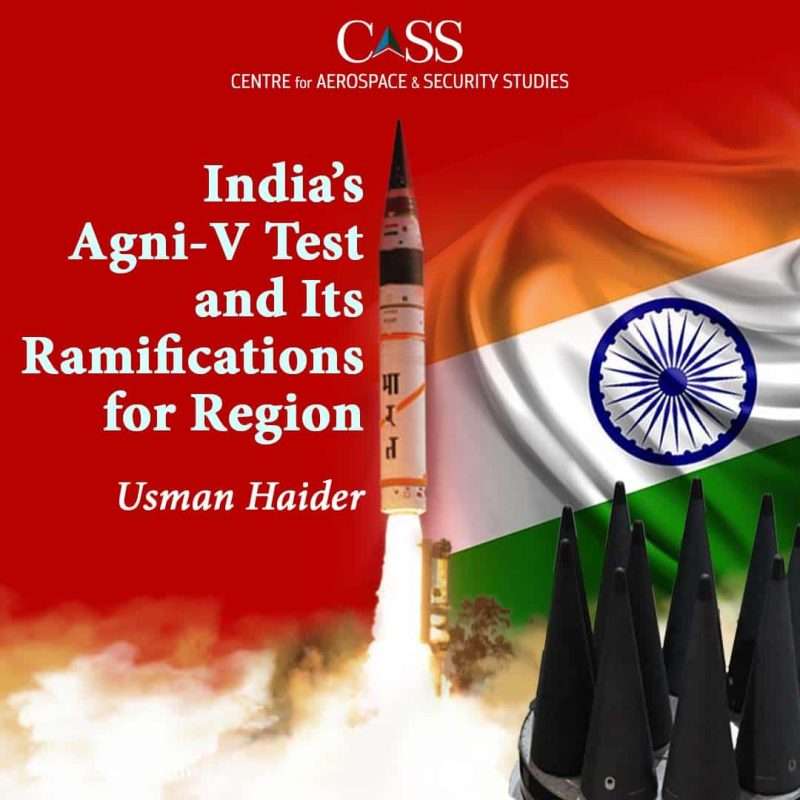On 11 March 2024, Indian Prime Minister Narendra Modi announced the first successful test launch of the Agni-V Intercontinental Ballistic Missile (ICBM). It featured Multiple Independently Targetable Re-Entry Vehicle (MIRV) technology. The launch was named ‘Mission Divyastra,’ – a reference to the Hindu mythological weapons of ultimate destruction. The test bears testimony to India’s continued endeavours to enhance the reach, precision, and assuredness of its delivery system even at the cost of impacting regional strategic stability. The test also signifies a subtle shift from India’s nuclear doctrine.
MIRV technology enables the integration of more than one warhead inside a missile cone, allowing it to strike multiple targets, each with a separate warhead. This increases the missile success rate against targets, even those which are defended by a Ballistic Missile Defence (BMD) system. For instance, intercepting MIRV-capable missiles requires simultaneous interception of multiple re-entry vehicles, which increases MIRV’s probability of overwhelming missile defences. MIRV also makes it possible for one missile to hit multiple targets even if they are apart at a maximum distance of 1500 kilometres.
India has been working on mastering MIRV technology for the last two decades. The first public disclosure was made by Vijay Kumar Saraswat, the erstwhile Defence Research and Development Organisation (DRDO) chief, in 2013, when he revealed future plans of integrating MIRVs on Agni-V. Different Indian analysts suggest that Agni-V missile can carry at least four and a maximum of 12 warheads – even though there is no official word by the Indian authorities on the subject. Indian officials have claimed that the recently tested MIRVs have an advanced sensor package to strike their targets precisely. These characteristics make MIRV a potent technology with a high rate of survivability and precision.
The test was not the first attempt to integrate MIRVs with its land-based missiles because there were unconfirmed reports in the past that India attempted to test MIRVs with Agni-P missile which has a range of 2000 km, making it more relevant to Pakistan. With a Circular Error Probability (CEP) of 10 metres and canisterised launch capability – enabling it to shorten readiness time, Agni-P is considered suitable for counterforce targets. All these features make Agni-P a candidate for MIRV technology which India has recently demonstrated on Agni-V.
The recent Agni-V launch with MIRV capability, also incentivises the First Strike option for India. Development of this capability, hence, appears to negate India’s declared No-First Use (NFU) doctrine. Additionally, the canisterised launch reduces advance warning, thus enhancing the potential for a First Strike. It also indicates India’s gradual inclination towards adopting a counterforce posture. The scenario strengthens concerns raised by non-proliferation scholars, who in the past had predicted India’s plans to relinquish its NFU policy and an increased probability of conducting pre-emptive strikes against Pakistan in a future conflict.
The gradual doctrinal adaptation and relentless efforts to improve its BMD system is strengthening India’s position vis à vis Pakistan. Therefore, to regain balance, Pakistan needs to adopt four minimum measures in line with its policy of Full Spectrum Deterrence (FSD).
First, Pakistan needs assured second-strike capability, which requires moving toward indigenous Ballistic Missile Submarines (SSBNs). This capability, once operational, will dissuade India’s First Strike temptations. Secondly, Pakistan should continue the maturation of its MIRV technology, which has been tested only twice since 2017, because it will enhance the survivability of Pakistani missiles against Indian missile defences. Thirdly, Pakistan must continue to pursue the dispersal of its land-based delivery systems and hardening of its storage sites to increase the survivability of its nuclear forces against MIRVs. Lastly, Pakistan should adopt enhanced concealment techniques to hide its nuclear assets. This will make it harder for Indian Intelligence Surveillance and Reconnaissance (ISR) assets to locate them. Together, these four measures can counter this recent Indian move to disturb strategic stability in the region.
A worrisome feature of India’s latest testing was its non-adherence to the bilateral Confidence-Building Measure (CBM) of ‘Pre-notification of the Fight Testing of Ballistic Missiles,’ with Pakistan. Under Article 2 of this CBM, the two sides are legally obliged to inform the other of a planned test under a ‘three-day timeline’. The Pakistan Foreign Office confirmed that India did not observe the agreed timeline for the last test. This non-compliant behaviour of the Indian government is against diplomatic norms and can lead to further distrust between the two states, which already have limited functional CBMs.
To sum up, Indian endeavours of adding MIRVs with land-based missiles, coupled with ongoing efforts to enhance the efficacy of its missile defence system, pose a serious challenge to the prevailing strategic stability in the region. It is thus, imperative that Pakistan continues its effort to thwart Indian designs while eschewing an arms race.
Usman Haider is a Research Assistant at the Centre for Aerospace & Security Studies (CASS), Islamabad, Pakistan. He can be reached at [email protected].





